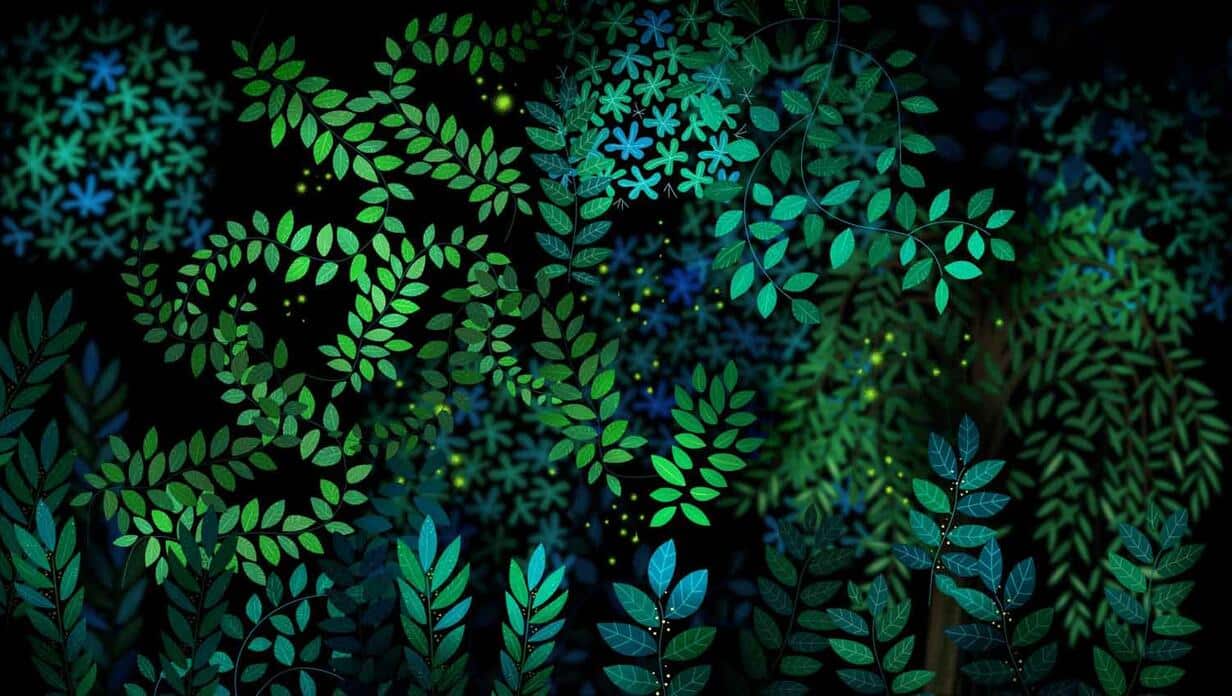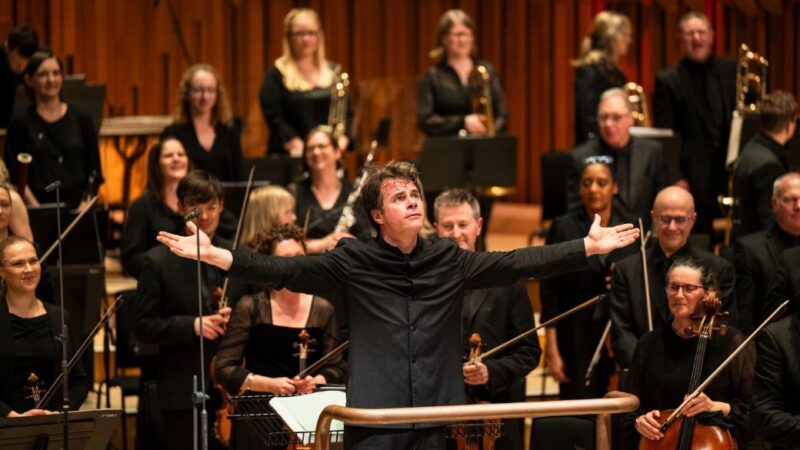Barbican Hall
The world is melting as you may have heard, and with those of us of reading age slowly racing towards senility, the children are our only hope. With climate despair rampant it is important to remind young people of the choice and hope inherent in their future. What better way to do that than with live art and music? The arch angels of optimism.
All that loftiness aside, and trying not to sound too much like a bitter twisted black turtleneck-wearing stereotype but….I don’t like most kids. Loud, grubby, and prone to put fingerprints on silk shirts. With that in mind, clad in deepest black my boyfriend and I plonk ourselves down amid a sea of bambinos. As the BBC SO produces that strange discordance of tuning up a mirroring call rises from the audience as small folk bawl and mew.
Channeling Whitney’s “the children are the future” we suffer through Blue Peter’s Richie Driss’s chirpy introduction, asking us if we have brought our 3.7 trillion cells with us today (a terrifying thought). The difference from a normal concert (apart from all the tiny people in attendance) is the screen hanging on the back wall and Grégoire Pont our architect extraordinaire sitting hunched over a black table stage left.
Pont is an animator and artist. He pioneered the concept of “Cinesthetics” after a formative trip to see Disney’s Fantasia in 2000. This idea of grafting live animation to live music is a wonderful one for young/old audiences alike. Although it still has some way to go before it is at the house of mouse standards. Firstly the screen is a little too far back and small to feel much more than a background for the music, surely a gauze or multiple screens might be more impressive?
Secondly, the needed speed of drawing means that the majority of it is simplistic, dots and dashes, a little underwhelming. The sections that do work well are the cut-and-paste collage work and the pre-recorded animations of flapping birds and darting fish. But then maybe I am viewing this from an adult and fatally cynical brain (it’s been said before)? As the squeals of delight emitted from the young crowd throughout the evening are hard to discount.
We kick things off in the primordial, with Olivier Messiaen’s extracts from Les offrandes oubliée. An epic beginning with an oil lamp-style pattern bleaching across the screen. A slow, stately, and fitting musical choice for the origins of life on our planet.
Rapidly things heat up with Einojuhani Rautavaara’s ‘Swans migrating’ from Cantus Arcticus: Concerto For Birds and Orchestra. Shockingly (not) the fluttering flutes and twittering woodwind sections bring to mind the wings and beaks of birds. Pont works well with the music running with these images as his caricatures flap and flitter across the screen with even dinos making a “terrifying” appearance.
Kaija Saariaho ‘Terrestre l’oiseau dansant’ from L’Aile du songe is by far the best musical moment, proving that classical is perfectly palatable in the right context for the younger crowd. The hall is rendered uncharacteristically silent with a bombastic clarinet solo. Complete with tripping scales and odd out breaths, hisses and tsk tsk sounds that I have never heard a woodwind make. Funny and infectious, the comic plonking of the xylophones makes us wonder why Dalia Stasevska (the conductor) and Pont didn’t pick more music like this. Exciting, attention-grabbing, and more appropriate for slightly shorter concentration spans.
Next, we are plunged into the ocean, with Pont’s drawing conjuring up the deep and interconnected webs at their most beautiful. Dani Howard’s Argentum has the encompassing grace and liquidity to perfectly convey the big blue’s scope, and the reef animations are some of the most effective.
Up to this point, everything has been on the organic side. This all changes with Anna Meredith’s Nautilus, arrangement for orchestra (and a UK premiere). As the cities spread the forests of the old world are gobbled up on screen before us. This tramping, marching, almost techno-style trumpeted war cry is perfect for the depictions of humanity’s destructive nature. This piece is where the animations are most aesthetically impressive and carry the most thematic weight.
John Adams’s ‘Panic’ from Doctor Atomic Symphony builds the sense of impending doom, as the cities grow and grow with frantic rapidity. The smog of these new concrete jungles disrupts the sweet little animated creatures we made friends with in the earlier drawings. Skittering clockwork-sounding violins underscore this battle for supremacy. Gloriously camp and clashing, another highlight.
Benjamin Britten’s ‘Storm’ from Four Sea Interludes builds even more upon this frantic crescendo, as the animation shows a king trying to recover from the destruction his greed has wrought on the world. His spiderly animated arm reaches again and again for crops only for them to dissolve and fade away. A clever way to discuss ecological collapse without being too graphic for the audience.
Alberto Ginastera’s ‘Danza del trigo’ from Estancia and Francis Poulenc’s La baigneuse de Trouville provide a soft and sweet hopeful conclusion to the previous hellish accompaniment. On-screen flashes the message “our planet is a fragile and magical flower” as a group of children germinate the seeds of the future with their tears.
I thank Grégoire Pont, Dalia Stasevska, the BBC SO, and the Barbican for an afternoon of beautiful music, beautiful sentiment, and at times beautiful animation. Hope is a small, soft, but resilient thing and we must nurture it as we nurture the young if we ever have any chance of saving this most precious planet.
Grab a life-changing concert today, click here!



